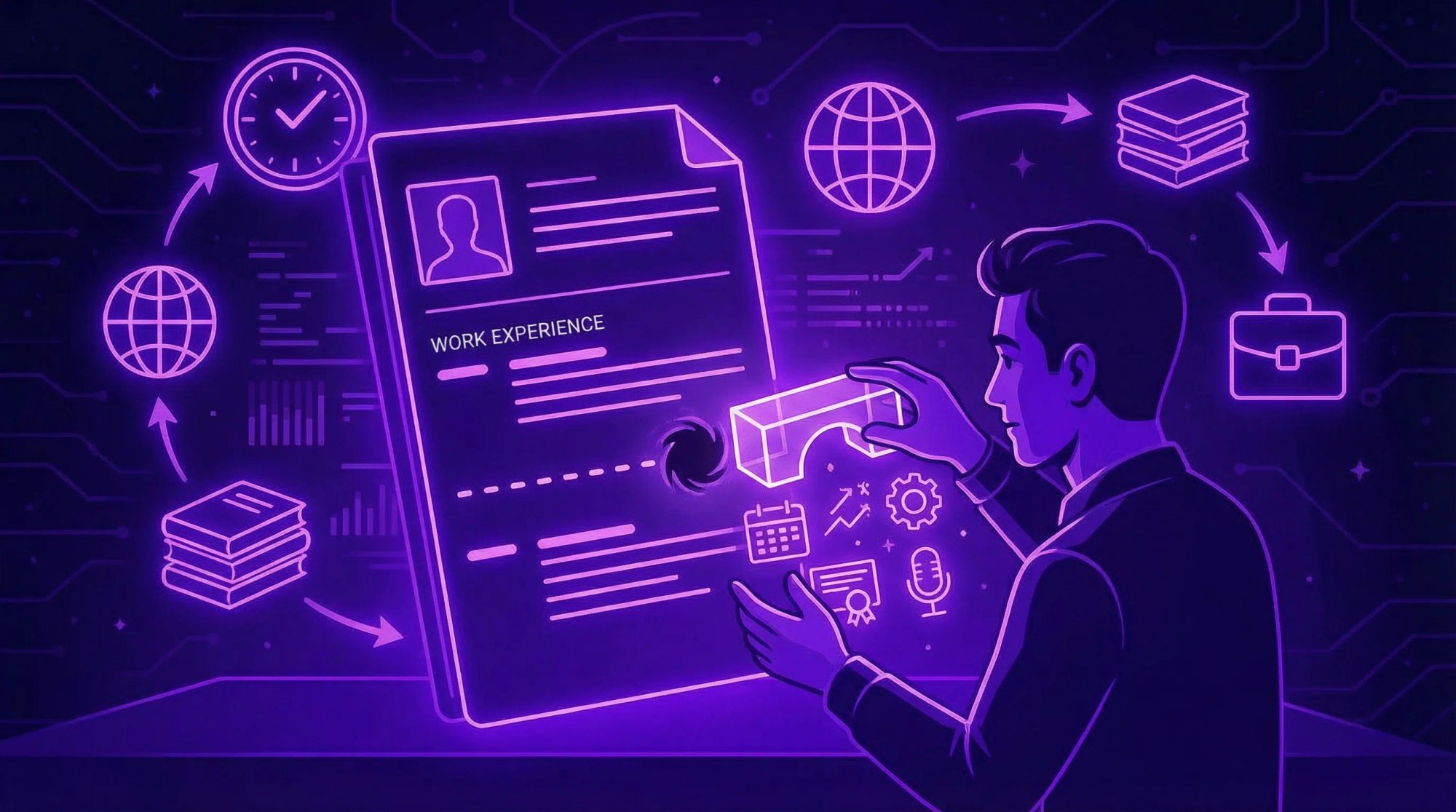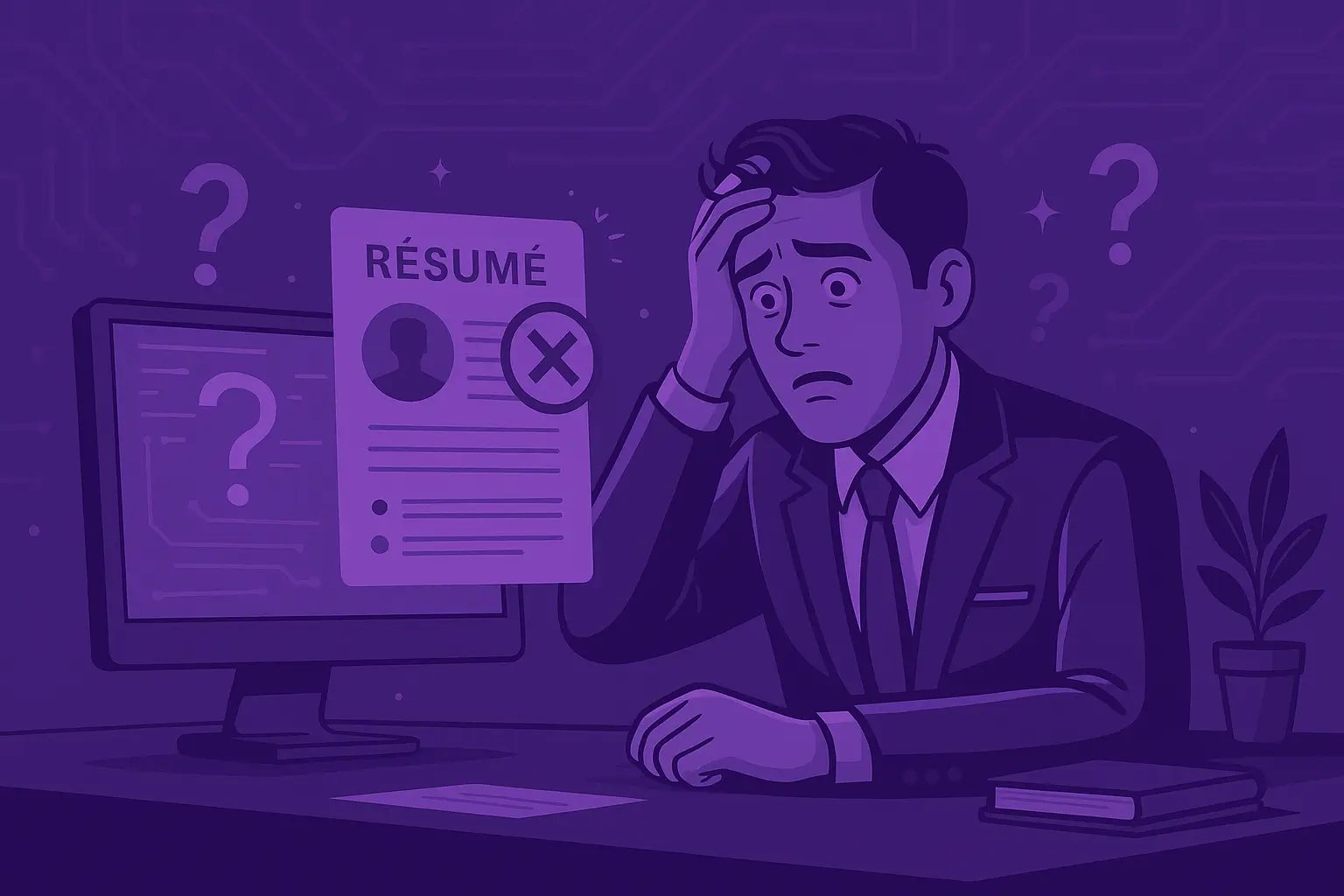How Long Should A Cover Letter Be?

Did you know that a well-crafted cover letter can significantly boost your chances of landing an interview? While your resume showcases your skills and experience, cover letters allow you to personalize your application and make a compelling case for why you're the perfect fit for the job.
In this article, we'll provide you with practical tips to help keep your cover letter concise and impactful. By the end, you'll know exactly how to match your cover letter word count to the job description, making it easier for the hiring manager to see why you're the ideal candidate.
Finding the Perfect Cover Letter Length for Job Seekers
When it comes to cover letters, length matters. So, how long should a cover letter be? Ideally, your cover letter should be one page long, consisting of three to four paragraphs.
This length strikes the perfect balance, allowing you to present key points without overwhelming the hiring managers. In a sea of applicants, a cover letter that is clear and to the point will stand out.
By keeping your cover letter to one page, you're respecting the hiring manager's time while ensuring that you highlight why you're the ideal candidate for your dream job. Remember, the goal is to intrigue them enough to want to learn more about you through your resume and an interview.
So, keep your word count in check. Aim for half a page to a full page, and you'll be on the right track to impressing potential employers.
Why is Cover Letter Length So Important?
First impressions are crucial, and the length of your cover letter plays a significant role in this. From a recruiter's perspective, cover letters are often given just a few seconds of attention. This means your cover letter needs to be impactful and concise to stand out among other applicants.
If your cover letter is too long, a potential employer might not read it in its entirety. On the other hand, if it's too short, it might seem like you haven't put in enough effort. Striking the right balance is key to making a good cover letter.
An appropriate length cover letter—about half a page to a full page—demonstrates professionalism and attention to detail. This length allows you to highlight your relevant skills and express your enthusiasm for an in-person meeting without overwhelming the reader. Each cover letter section should be purposeful, ensuring you convey your message effectively and leave a lasting positive impression.
Structuring Your Cover Letter
Crafting a cover letter with the right length is not just about word count—it's also about structure. Here's how to organize your cover letter to ensure each paragraph serves its purpose effectively.
Introduction Paragraph
Start by stating your purpose for writing. Mention the position you are applying for and briefly introduce yourself. This first paragraph should be engaging and provide a snapshot of who you are and why you're interested in the role.
Body Paragraphs (1-2 paragraphs)
In the next paragraph, highlight key achievements and experiences that are relevant to the position. Explain how your skills align with the job requirements, focusing on your qualifications and how they make you a strong candidate. Use specific examples to demonstrate your accomplishments and the value you can bring to the company.
If you opt for a second body paragraph, continue to elaborate on your experiences or discuss how your personal attributes make you a great fit for the team. Ensure each paragraph is concise and directly relates to the job description.
Closing Paragraph
In the last paragraph, reiterate your interest in the position. Mention how you plan to follow up on your application. Thank the reader for their time and consideration, and express your eagerness to discuss your application further.
By structuring your cover letter this way, you'll ensure it's the ideal length—concise yet comprehensive. This approach not only helps you stand out to hiring managers but also makes it easier for applicant tracking systems to recognize your qualifications. Remember, a well-organized cover letter at the right length can make all the difference in landing your dream job.
Tips for Keeping Your Cover Letter Concise
Maintaining the ideal cover letter length can be challenging, but these tips will help you keep your cover letter concise and impactful.
Focus on Relevance
Make sure to only include information pertinent to the specific job you are applying for. Tailor your cover letter to highlight the experiences and skills that align with the job description. This focus will help you stay within the one-page limit while making a strong impression on the hiring manager.
Use Clear and Direct Language
Avoid overly complex sentences and jargon. Clear and straightforward language ensures your message is easily understood. This is especially important for an electronic cover letter, where clarity and brevity are crucial.
Edit and Proofread
Take the time to cut out unnecessary words and ensure your cover letter is concise. Each sentence should add value and contribute to showcasing your skill set. Proofreading is essential to catch any errors and improve clarity.
Seek Feedback
Have someone else review your cover letter for length and clarity. Another perspective can help you identify areas where you can be more concise. Feedback is invaluable in crafting a polished cover letter that adheres to the ideal cover letter length.
By following these tips, you can create a cover letter that effectively communicates your qualifications and career path, while staying within the one-page limit.
Consider using bullet points to break up text and highlight key achievements, making your cover letter more readable and impactful for the hiring manager. Remember, a concise, well-crafted cover letter can set you apart from other applicants and get you one step closer to your dream job at your desired company.
Leveraging AI Tools for the Perfect Cover Letter
In today's digital age, job seekers have access to advanced tools that can help create an ideal, job-specific cover letter. AI-powered platforms can assist you in crafting a cover letter that matches the requirements of the job description while maintaining the ideal cover letter length.
These AI tools analyze the job posting and suggest relevant keywords and phrases to include, ensuring your cover letter highlights your most pertinent skills and experiences. They can also help you structure your cover letter effectively, making sure each section serves its purpose and aligns with what hiring managers are looking for!
Moreover, AI tools can provide editing and proofreading assistance, catching errors you might miss and offering suggestions for clearer, more concise language. This ensures your cover letter is polished and professional.
By using AI tools, you can create a tailored, impactful cover letter that increases your chances of standing out to potential employers.
Conclusion
To recap, the ideal cover letter length is one page, consisting of 3-4 concise paragraphs. This format allows you to effectively highlight your relevant skills and experiences without overwhelming the hiring manager. Remember to focus on relevance, use clear and direct language, and ensure your cover letter is well-organized.
For final tips, always tailor your cover letter to the specific job you're applying for. Edit and proofread carefully, and don't hesitate to seek feedback from others to ensure your cover letter is polished and professional. Additionally, consider using AI tools to help you craft a job-specific cover letter. These tools can suggest relevant keywords, help structure your content, and provide editing assistance.
Putting effort into your cover letter is crucial. A well-crafted cover letter can significantly impact your job application success, showcasing your qualifications and enthusiasm for the position. Take advantage of available resources, including AI, to create a compelling cover letter, and you'll increase your chances of landing your dream job. Good luck!
Did you know that a well-crafted cover letter can significantly boost your chances of landing an interview? While your resume showcases your skills and experience, cover letters allow you to personalize your application and make a compelling case for why you're the perfect fit for the job.
In this article, we'll provide you with practical tips to help keep your cover letter concise and impactful. By the end, you'll know exactly how to match your cover letter word count to the job description, making it easier for the hiring manager to see why you're the ideal candidate.
Finding the Perfect Cover Letter Length for Job Seekers
When it comes to cover letters, length matters. So, how long should a cover letter be? Ideally, your cover letter should be one page long, consisting of three to four paragraphs.
This length strikes the perfect balance, allowing you to present key points without overwhelming the hiring managers. In a sea of applicants, a cover letter that is clear and to the point will stand out.
By keeping your cover letter to one page, you're respecting the hiring manager's time while ensuring that you highlight why you're the ideal candidate for your dream job. Remember, the goal is to intrigue them enough to want to learn more about you through your resume and an interview.
So, keep your word count in check. Aim for half a page to a full page, and you'll be on the right track to impressing potential employers.
Why is Cover Letter Length So Important?
First impressions are crucial, and the length of your cover letter plays a significant role in this. From a recruiter's perspective, cover letters are often given just a few seconds of attention. This means your cover letter needs to be impactful and concise to stand out among other applicants.
If your cover letter is too long, a potential employer might not read it in its entirety. On the other hand, if it's too short, it might seem like you haven't put in enough effort. Striking the right balance is key to making a good cover letter.
An appropriate length cover letter—about half a page to a full page—demonstrates professionalism and attention to detail. This length allows you to highlight your relevant skills and express your enthusiasm for an in-person meeting without overwhelming the reader. Each cover letter section should be purposeful, ensuring you convey your message effectively and leave a lasting positive impression.
Structuring Your Cover Letter
Crafting a cover letter with the right length is not just about word count—it's also about structure. Here's how to organize your cover letter to ensure each paragraph serves its purpose effectively.
Introduction Paragraph
Start by stating your purpose for writing. Mention the position you are applying for and briefly introduce yourself. This first paragraph should be engaging and provide a snapshot of who you are and why you're interested in the role.
Body Paragraphs (1-2 paragraphs)
In the next paragraph, highlight key achievements and experiences that are relevant to the position. Explain how your skills align with the job requirements, focusing on your qualifications and how they make you a strong candidate. Use specific examples to demonstrate your accomplishments and the value you can bring to the company.
If you opt for a second body paragraph, continue to elaborate on your experiences or discuss how your personal attributes make you a great fit for the team. Ensure each paragraph is concise and directly relates to the job description.
Closing Paragraph
In the last paragraph, reiterate your interest in the position. Mention how you plan to follow up on your application. Thank the reader for their time and consideration, and express your eagerness to discuss your application further.
By structuring your cover letter this way, you'll ensure it's the ideal length—concise yet comprehensive. This approach not only helps you stand out to hiring managers but also makes it easier for applicant tracking systems to recognize your qualifications. Remember, a well-organized cover letter at the right length can make all the difference in landing your dream job.
Tips for Keeping Your Cover Letter Concise
Maintaining the ideal cover letter length can be challenging, but these tips will help you keep your cover letter concise and impactful.
Focus on Relevance
Make sure to only include information pertinent to the specific job you are applying for. Tailor your cover letter to highlight the experiences and skills that align with the job description. This focus will help you stay within the one-page limit while making a strong impression on the hiring manager.
Use Clear and Direct Language
Avoid overly complex sentences and jargon. Clear and straightforward language ensures your message is easily understood. This is especially important for an electronic cover letter, where clarity and brevity are crucial.
Edit and Proofread
Take the time to cut out unnecessary words and ensure your cover letter is concise. Each sentence should add value and contribute to showcasing your skill set. Proofreading is essential to catch any errors and improve clarity.
Seek Feedback
Have someone else review your cover letter for length and clarity. Another perspective can help you identify areas where you can be more concise. Feedback is invaluable in crafting a polished cover letter that adheres to the ideal cover letter length.
By following these tips, you can create a cover letter that effectively communicates your qualifications and career path, while staying within the one-page limit.
Consider using bullet points to break up text and highlight key achievements, making your cover letter more readable and impactful for the hiring manager. Remember, a concise, well-crafted cover letter can set you apart from other applicants and get you one step closer to your dream job at your desired company.
Leveraging AI Tools for the Perfect Cover Letter
In today's digital age, job seekers have access to advanced tools that can help create an ideal, job-specific cover letter. AI-powered platforms can assist you in crafting a cover letter that matches the requirements of the job description while maintaining the ideal cover letter length.
These AI tools analyze the job posting and suggest relevant keywords and phrases to include, ensuring your cover letter highlights your most pertinent skills and experiences. They can also help you structure your cover letter effectively, making sure each section serves its purpose and aligns with what hiring managers are looking for!
Moreover, AI tools can provide editing and proofreading assistance, catching errors you might miss and offering suggestions for clearer, more concise language. This ensures your cover letter is polished and professional.
By using AI tools, you can create a tailored, impactful cover letter that increases your chances of standing out to potential employers.
Conclusion
To recap, the ideal cover letter length is one page, consisting of 3-4 concise paragraphs. This format allows you to effectively highlight your relevant skills and experiences without overwhelming the hiring manager. Remember to focus on relevance, use clear and direct language, and ensure your cover letter is well-organized.
For final tips, always tailor your cover letter to the specific job you're applying for. Edit and proofread carefully, and don't hesitate to seek feedback from others to ensure your cover letter is polished and professional. Additionally, consider using AI tools to help you craft a job-specific cover letter. These tools can suggest relevant keywords, help structure your content, and provide editing assistance.
Putting effort into your cover letter is crucial. A well-crafted cover letter can significantly impact your job application success, showcasing your qualifications and enthusiasm for the position. Take advantage of available resources, including AI, to create a compelling cover letter, and you'll increase your chances of landing your dream job. Good luck!
Don't miss out on
your next opportunity.
Create and send applications in seconds, not hours.








